Every year millions of visitors experience the unique beauty (and smell) of the more than 10,000 hot springs, mudpots, fumaroles (steam vents), travertine terraces and geysers at Yellowstone National Park. These hydrothermal features are home to hardy thermophilic bacteria which thrive on the extreme conditions found in the park.
To celebrate the 100th Anniversary of the National Park Service, we are sharing a list of some of the amazing microorganisms that help make Yellowstone National Park so majestic.
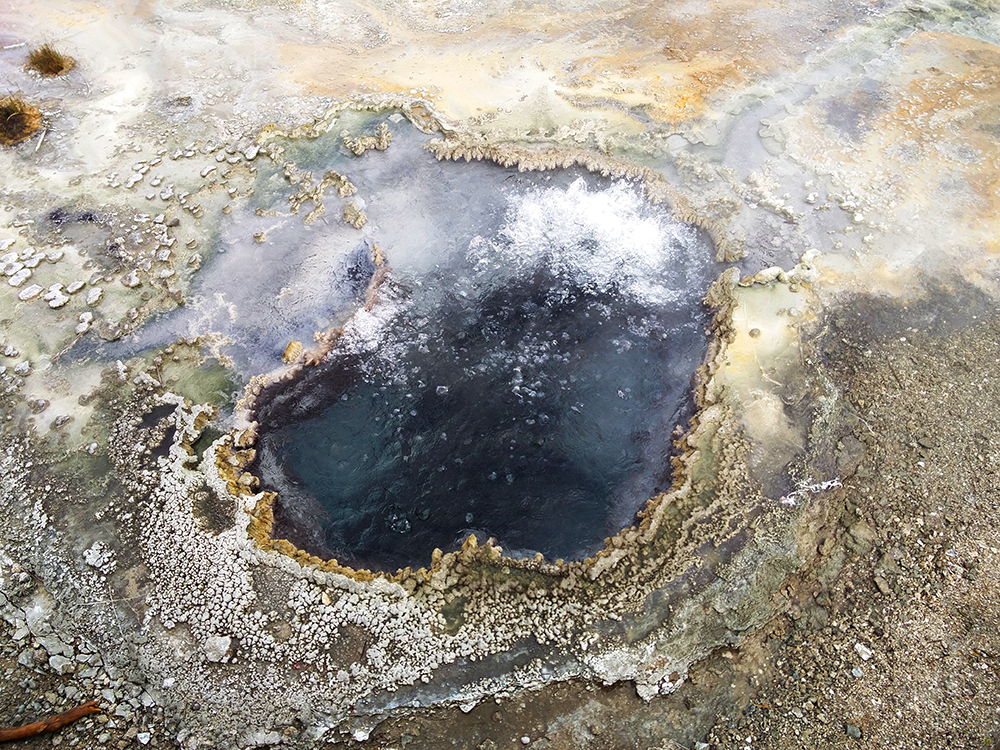 Thermophilic Bacteria
Thermophilic Bacteria
Hydrothermal features at Yellowstone, like the Grand Prismatic Spring, provide the ideal habitat for thermophilic bacteria. These aptly named extremophiles – “thermo” means “heat” and “phile” means “lover” – thrive on the energy and chemicals found in the hot springs throughout Yellowstone. Grouped together to form microbial mats, the thermophiles give the hydrothermal features their unique and brilliant colors.
Thermophilic bacterial mats are formed when individual bacteria connect to 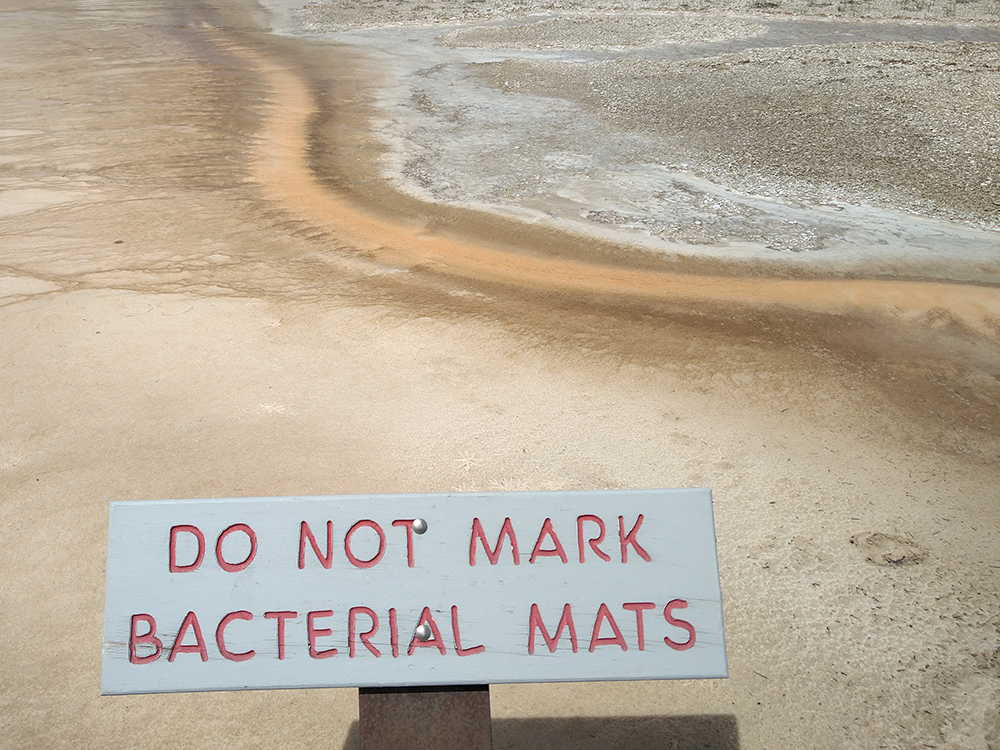 form long strands known as filaments. Mini-ecosystems are created when the strands bind together to form the thermophilic mats. Examples of these mats can be found in many places throughout Yellowstone including the popular tourist attraction, Mammoth Hot Springs.
form long strands known as filaments. Mini-ecosystems are created when the strands bind together to form the thermophilic mats. Examples of these mats can be found in many places throughout Yellowstone including the popular tourist attraction, Mammoth Hot Springs.
The communities formed by thermophiles living in the run-off from hot springs are often likened to miniature forests. Microbes living on the surface of the bacterial mats perform photosynthesis to provide fuel for the community (like a forest canopy). Energy is derived from this fuel by the organisms living inside the mat. These microbes also decompose and recycle nutrients to the mat’s canopy helping the ecosystem thrive.
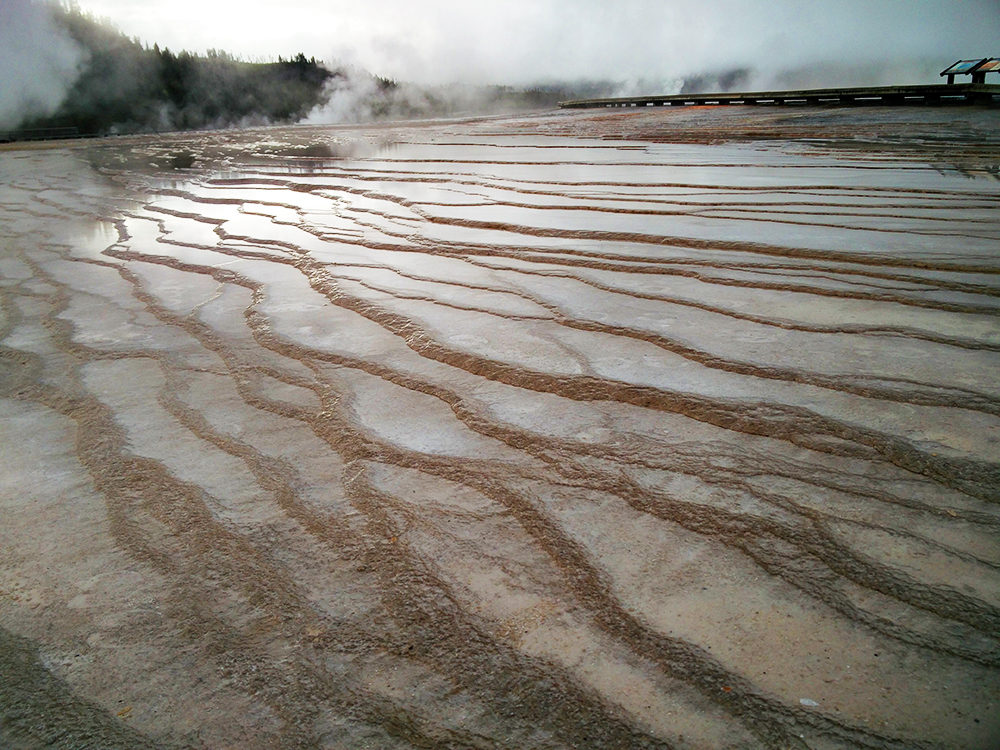
Thermus aquaticus
The “heat loving water dweller,” Thermus aquaticus was discovered by scientists in the Lower Geyser Basin in 1966. Thermus aquaticus thrives in high heats ranging from 50°C to 80°C (122°F to 176°F). These microbes contain the enzyme, Taq DNA polymerase, which is one of the backbones of molecular biology. The heat-resistant enzymes are used in the polymerase chain reaction (PCR) DNA amplification technique.
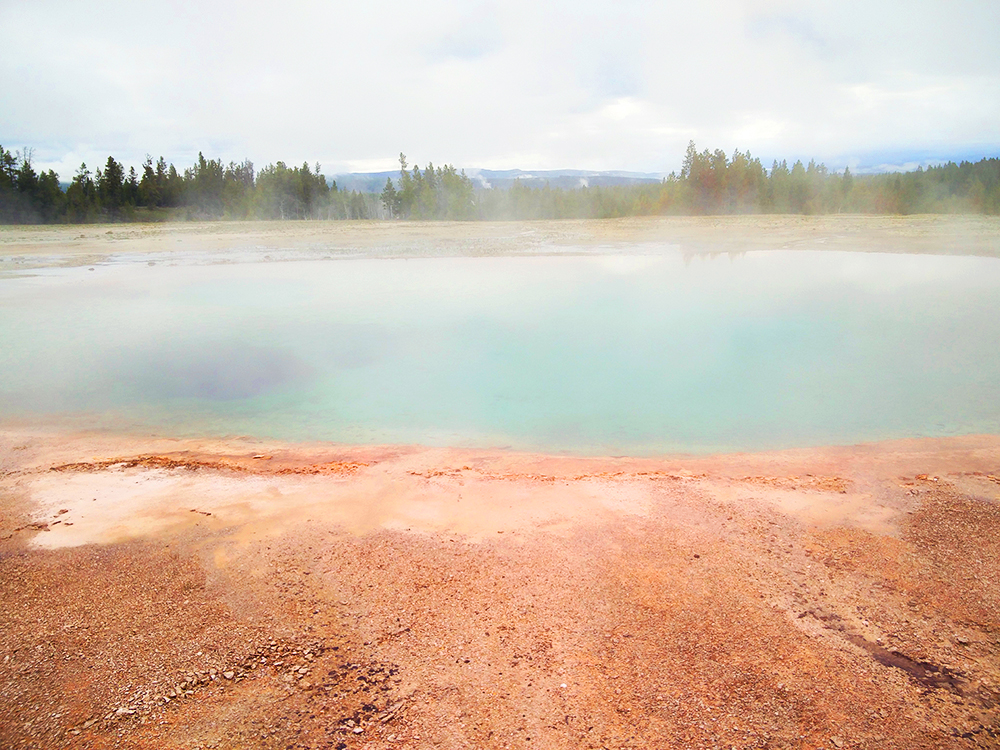 Caldicellulosiruptor obsidiansis
Caldicellulosiruptor obsidiansis
Obsidian Pool is where an anaerobic, extremely thermophilic, cellulolytic bacterium was discovered by scientists from the U.S. Department of Energy’s BioEnergy Science Center. Scientists hope studies of the anaerobe, Caldicellulosiruptor obsidiansis, will lead to development of a genetically modified thermophilic anaerobe capable of converting switchgrass to ethanol.
Caldicellulosiruptor obsidiansis, named for the location in which it was discovered, is found at the periphery of Obsidian Pool in the Mud Volcano Region of Yellowstone. Heat-tolerant 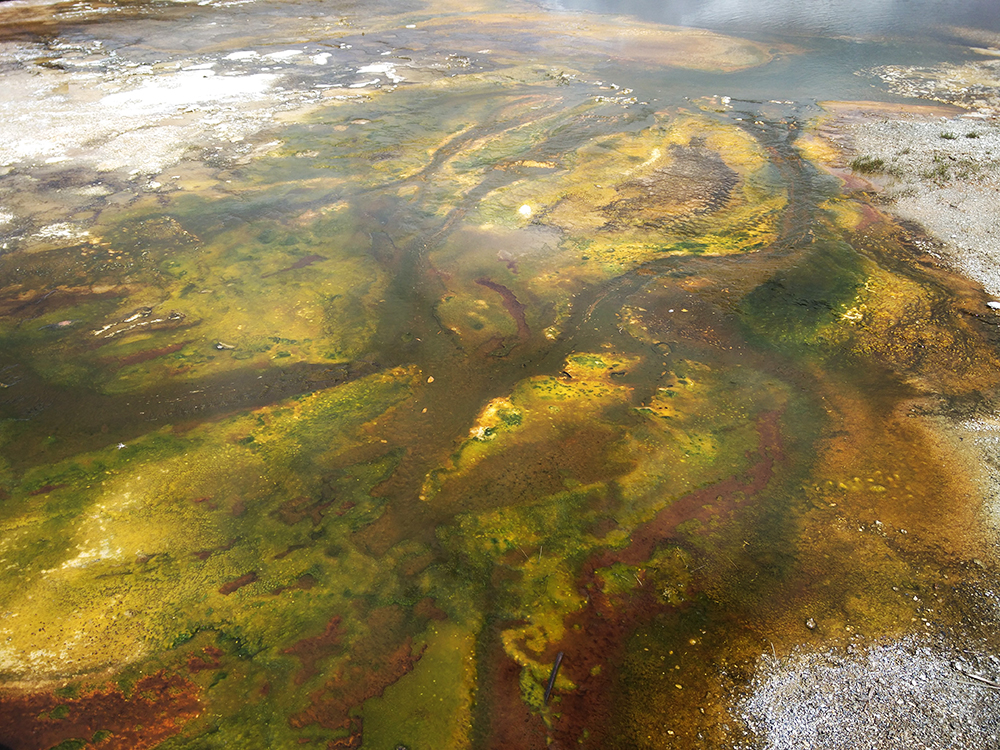 grasses grow around the edge of the pool. Cells are short, non-motile, Gram-positive rods. The optimal growth temperature is 78°C. The organism ferments many carbohydrates including glucose, maltose, arabinose, fructose, lactose, mannose, sucrose, galactose and xylose.
grasses grow around the edge of the pool. Cells are short, non-motile, Gram-positive rods. The optimal growth temperature is 78°C. The organism ferments many carbohydrates including glucose, maltose, arabinose, fructose, lactose, mannose, sucrose, galactose and xylose.
Cyanobacteria
Found on the Fountain Paint Pot Nature Trail, cyanobacteria can survive in water up to 73°C (167° F). Depending on water temperature, the bacterial mats can range in color including brown, green, yellow and orange. Three billion years ago, cyanobacteria became the first 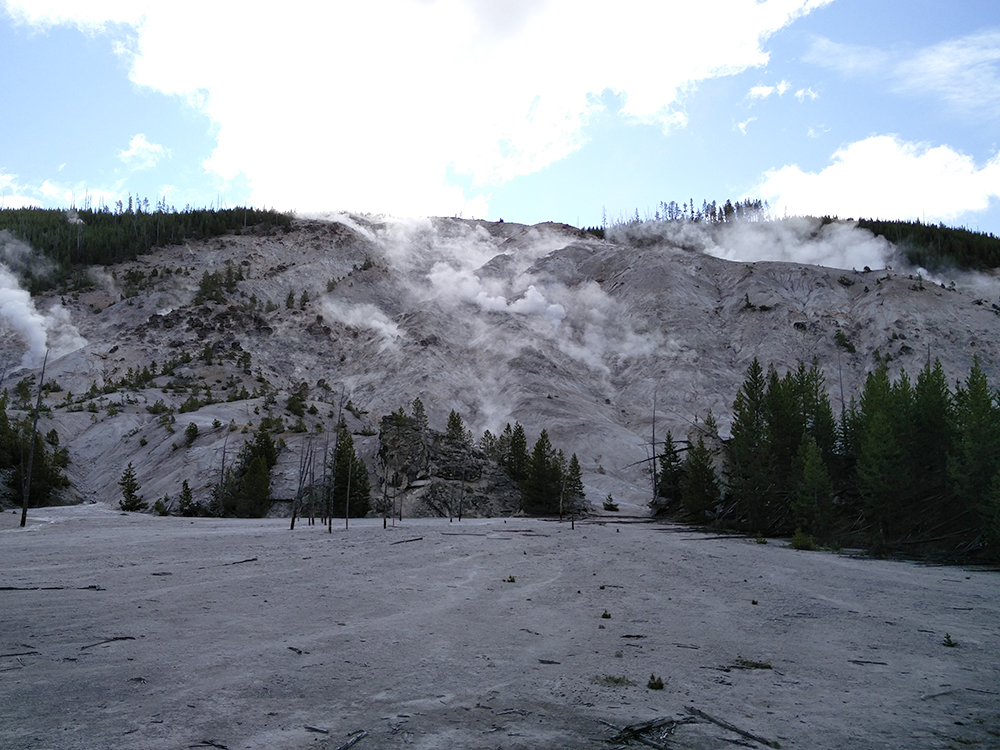 photosynthesizers, helping to make the oxygen-rich atmosphere we have today.
photosynthesizers, helping to make the oxygen-rich atmosphere we have today.
Sulfobobus acidocaldarius
The Roaring Mountain is home to another thermophile, Sulfolobus acidocaldarius. These microbes thrive on the hydrogen sulfide gas escaping from the earth. Sulfolobus acidocaldarius helps convert the gas into sulfuric acid which breaks the volcanic rock into clay resulting in erosion.
Decription of All Thermophilic Bacteria Found in Yellowstone National Park – source NPS.gov
| Name | Temperature | Description | Location |
| Cyanobacteria Calothrix |
30–45°C
86–113°F |
Color: dark brown mats
Metabolism: photosynthesis by day; fermentation by night |
|
| Phormidium | 35–57°C
95–135°F |
Color: orange mats
Metabolism: photosynthesis |
|
| Oscillatoria | 36–45°C
96–113°F |
Color: orange mats
Metabolism: photosynthesis; oscillating moves it closer to light sources. |
|
| Synechococcus | 52–74°C
126–165°F |
Color: green mats
Metabolism: photosynthesis by day; fermentation by night |
|
| Green Sulfur Chlorobium |
32–52°C
90–126°F |
Color: dense, dark green mats
Metabolism: anaerobic photosynthesis— produces sulfate and sulfur, not oxygen. |
|
| Green non-sulfur Chloroflexus |
35–85°C
95–185°F |
Color: green mats
Metabolism: anaerobic photosynthesis |
|
| Aquifex Hydrogenobaculum |
55–72°C
131–162°F |
Color: yellow and white streamers
Metabolism: uses hydrogen, hydrogen sulfide and carbon dioxide as energy sources; can use arsenic in place of hydrogen sulfide. |
|
| Deinococcus-Thermus Thermus |
40–79°C
104–174°F |
Color: bright red or orange streamers
Contains carotenoid pigments that act as sunscreen. |
|
Want to know more? Check out these resources:
Hydrothermal Features: https://www.nps.gov/yell/learn/nature/hydrothermal-features.htm
Paint Pot Nature Trail: https://www.nps.gov/features/yell/tours/fountainpaint/stopslist.htm
Thermophilic Archea: https://www.nps.gov/yell/learn/nature/thermoarchea.htm
Some Like It Hot: http://www.yellowstonepark.com/some-like-it-hot-rare-microbes-flourish-in-yellowstone-national-park-geysers-and-hot-springs/
Caldicellulosiruptor obsidiansis: http://www.ncbi.nlm.nih.gov/pmc/articles/PMC2820981/?tool=pubmed

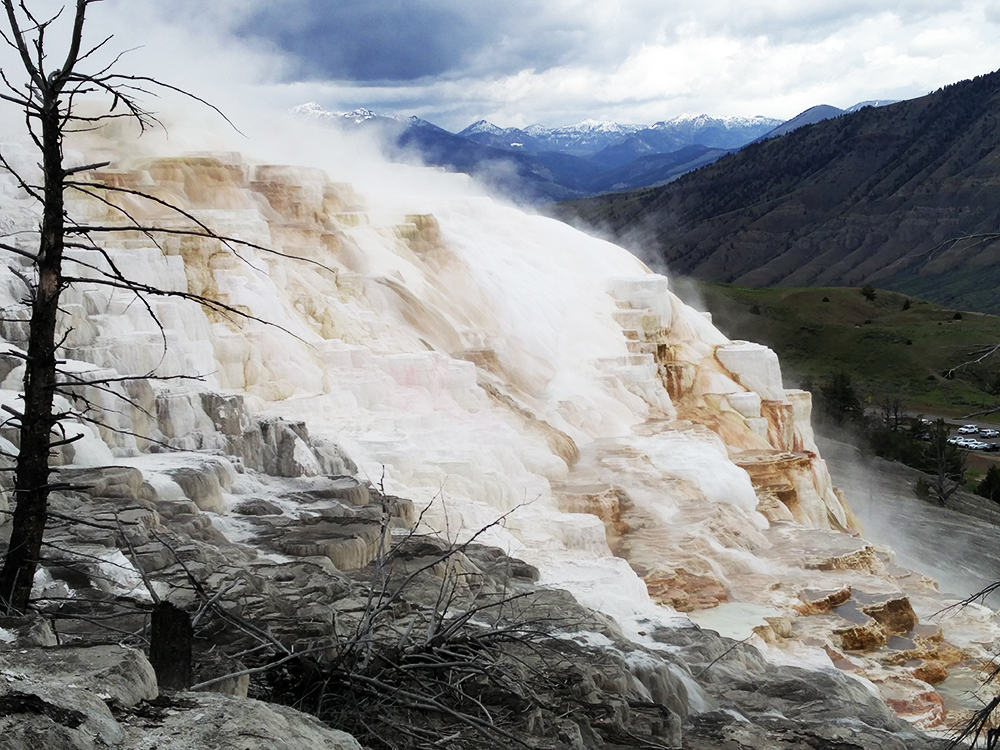




0 Comments
Trackbacks/Pingbacks